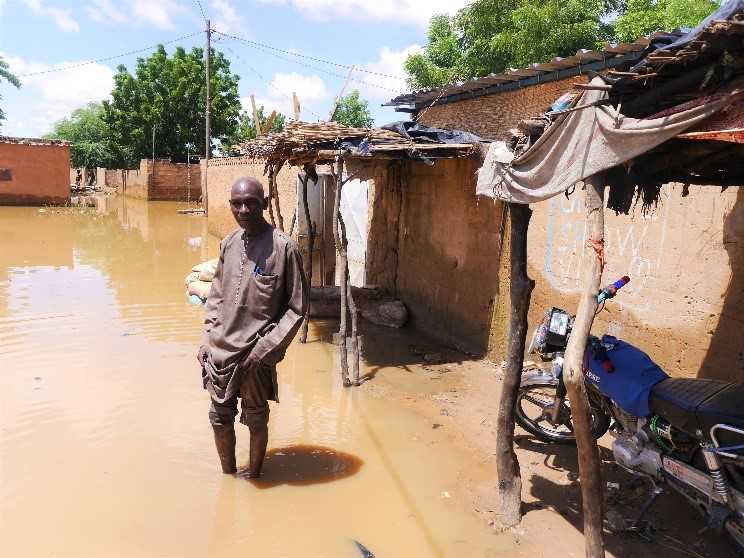
Niger: Thousands affected by floods face the risk of waterborne diseases
As Niger is grappling with the complexities of the COVID-19 pandemic the country has also been dealing with the impact of torrential rainfall and floods since July. More than 516,000 people in Niger have been affected by floods, And the rainy season has only just started.
According to the Government, more than 516,000 people in all seven regions of the country, including Niamey, have been affected by floods. Ongoing heavy rains have led to the loss of at least 69 lives, with more than 39,000 houses damaged, farmlands swamped, and thousands of livestock killed. Vital infrastructures including health care, water and sanitation facilities have been damaged and destroyed. The regions of Maradi, Agadez, Tillabéri and Niamey city are among the hardest hit.
In the Maradi, Dosso and Tahoua regions of Niger, over 340,000 people need assistance. That is nearly twice as many as anticipated in the country’s national response plan for 2020.

Credit: OCHA/Abdoulaye Hamani
Mr. Idi, a 54-year-old man from Niamey’s describes how he watched in horror as the houses around him began to collapse under the heavy rains “Most of the houses in this area were built out of clay and grass straws. They were not sturdy enough to resist heavy rainfall, so we heard them collapse one after the other” he explained. At the onset of the floods, my neighbours and I hurriedly put bags of sand at the entrance of our homes to hinder water from entering, to no avail. Climate change is real; we had never experienced such an overflow of the Niger River before,” he added.
While most of the people affected by the floods have found refuge in public infrastructures – mostly in schools – others have integrated with host families. Their priority needs include food, clean drinking water, shelter, health care, hygiene and sanitation services.
For Mr Idi, the situation was no different. With his house completely flooded, he decided to relocate his wife and five children to Dalwey village, his place of origin about 40 km away. He wanted to protect them from the risk of waterborne diseases and exposure to electrical shocks. He decided to stay in Niamey to monitor the situation before bringing them back.


Since the onset of the crisis, the Government of Niger and aid organizations have been providing life-saving assistance to the survivors. The people affected have received food, shelter kits, water purification supplies, mosquito nets, medical and sanitation assistance. So far, over 6,000 metric tons of food aid (to 20,245 most vulnerable households), 3,750 shelter kits and 8,432 non-food items kits have been distributed countrywide.
Despite the initial humanitarian ongoing response, needs remain high. Supplies are being depleted rapidly and more support, including from donors, is urgently needed
In response, the Emergency Relief Coordinator on 19 September allocated $5 million from the UN Central Emergency Response Fund (CERF)’s rapid response window for life-saving humanitarian action.
The funds will enable 4 UN agencies – IOM, UNFPA, UNHCR and UNICEF – to provide an integrated package of life-saving assistance to an estimated 182,000 people, with a strong emphasis on women and girls, and people with disabilities.
This allocation is in addition to the US$18.6 million that CERF has allocated since January to bridge the funding shortfall due to increasing and competing needs and to ensure emergency assistance to 284,000 people affected by the persisting crisis in Niger and to respond to the COVID-19 pandemic.
For more info, click here
____________________________________________________________________________________________
So far, the joint 2020 Humanitarian Response Plan and COVID-19 response seeking US$516.1 million received $195.8 million – and is only 37.9 per cent funded. Immediate funding is urgently needed so that the gains achieved thus far are not jeopardized, and to provide timely assistance to the most vulnerable people.


